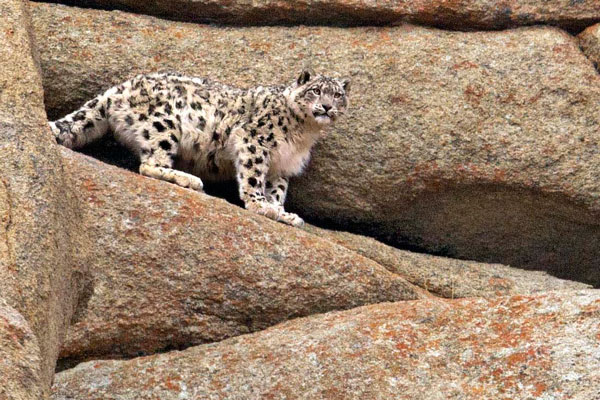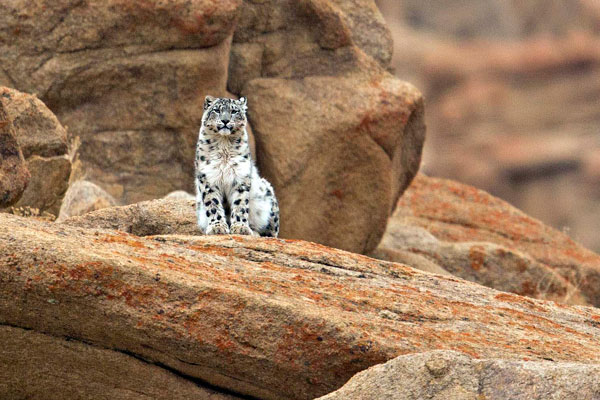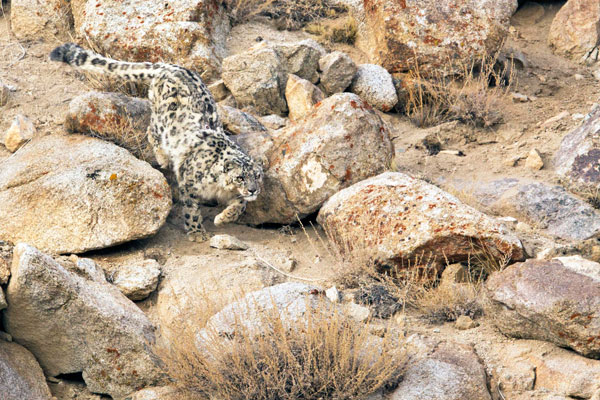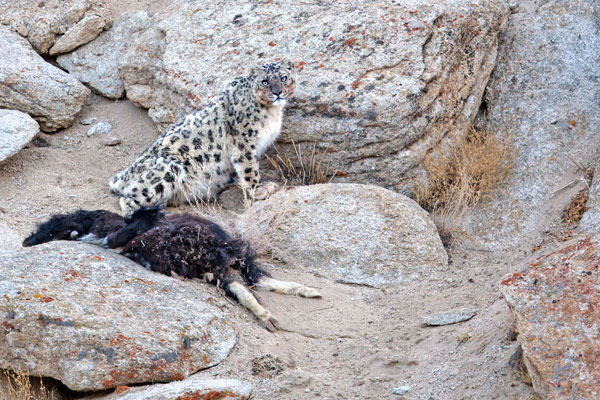Snow Leopard
The snow leopard (Panthera uncia) is a large feline native of the mountain ranges of central and southern Asia. It inhabits alpine and subalpine areas at altitudes ranging from 3,000 to 4,500m, extending from eastern Afghanistan to Mongolia and western China, with a higher density zone in Ladakh, in India.
In summer, snow leopards generally live above the treeline in mountain meadows and rocky areas at altitudes ranging from 2.700 to 6.000 m. In winter, they descend into forests at an altitude of about 1,200 to 2,000m. Snow leopards prefer rugged and rocky terrains and can move smoothly in snow up to 85 cm deep, although they prefer to use existing trails of other animals.
Snow leopards are solitary except for females with cubs. They raise them in dens in the mountains for long periods. A snow leopard lives in a defined territory but does not defend it aggressively when it is crossed by other snow leopards.
They have thick fur (with hair 5 to 12 cm long) that protects them from the cold. Their bodies are stocky with short, thick legs that allow them not to sink into the snow. Snow leopards are slightly smaller than the other Panthera type cats, reaching a shoulder height of 56 cm and a size ranging from 75 to 150 cm, with a large and thick tail 80 to 105 cm long. They sometimes wrap their tail around the muzzle when resting. Their eyes are pale green or gray. These elements, combined with the rarity of their appearances, explain the nickname of “phantom of the mountains” of this extraordinary feline.
The snow leopard is a carnivore that actively hunts its prey. It is an opportunistic hunter who can kill animals two to four times his own weight, like blue Himalayan sheeps or bharals, mules or goats, and it also hunts small mammals such as marmots, pikas and voles. Another feature that distinguishes it from other big cats is that it cannot roar.
Snow leopards are listed as vulnerable on the IUCN Red List of Threatened Species because it is estimated that there are fewer than 10,000 mature individuals in the world, and their numbers will decrease by about 10% over the next 23 years. In 2016, the global population was estimated at 4,678 to 8,745 mature individuals.






